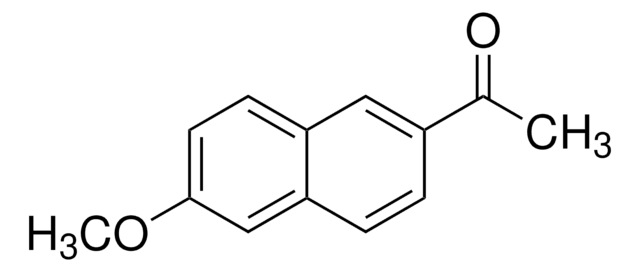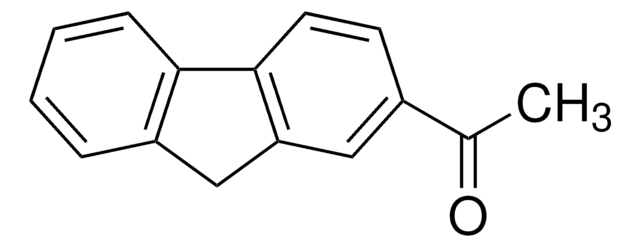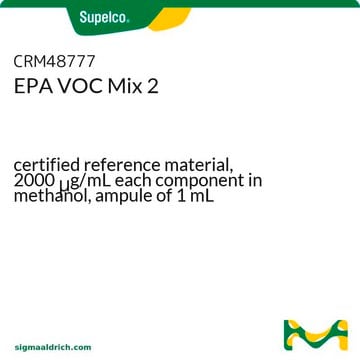MABN2655
Anti-Kynurenine Antibody, clone 11F9
Synonim(y):
(2S)-2-Amino-4-(2-aminophenyl)-4-oxo-butanoic acid
About This Item
Polecane produkty
pochodzenie biologiczne
mouse
Poziom jakości
forma przeciwciała
purified antibody
rodzaj przeciwciała
primary antibodies
klon
11F9, monoclonal
masa cząsteczkowa
calculated mol wt 208.22 kDa
observed mol wt ~65 kDa
oczyszczone przez
using protein G
reaktywność gatunkowa
human
reaktywność gatunkowa (przewidywana na podstawie homologii)
all
opakowanie
antibody small pack of 100 μg
metody
western blot: suitable
izotyp
IgG1κ
sekwencja epitopowa
Unknown
numer dostępu Protein ID
numer dostępu UniProt
temp. przechowywania
2-8°C
Opis ogólny
Specyficzność
Immunogen
Zastosowanie
Evaluated by Western Blotting with Kynurenine modified Bovine serum albumin (BSA).
Western Blotting Analysis (WB): A 1:20,000 dilution of this antibody detected Kynurenine modified BSA, but not the unmodified BSA.
Tested applications
ELISA Analysis: A representative lot detected Kynurenine in ELISA applications (Staniszewska, M., et al. (2007). J Immunol Methods. 324(1-2); 63-73).
Immunocytochemistry Analysis: A representative lot detected Kynurenine in Immunocytochemistry applications (Staniszewska, M., et al. (2007). J Immunol Methods. 324(1-2); 63-73).
Western Blotting Analysis: A representative lot detected Kynurenine in Western Blotting applications (Staniszewska, M., et al. (2007). J Immunol Methods. 324(1-2); 63-73).
Immunohistochemistry Applications: A representative lot detected Kynurenine in Immunohistochemistry applications (Staniszewska, M., et al. (2007). J Immunol Methods. 324(1-2); 63-73).
Note: Actual optimal working dilutions must be determined by end user as specimens, and experimental conditions may vary with the end user.
Postać fizyczna
Przechowywanie i stabilność
Inne uwagi
Oświadczenie o zrzeczeniu się odpowiedzialności
Nie możesz znaleźć właściwego produktu?
Wypróbuj nasz Narzędzie selektora produktów.
Kod klasy składowania
13 - Non Combustible Solids
Klasa zagrożenia wodnego (WGK)
WGK 1
Temperatura zapłonu (°F)
Not applicable
Temperatura zapłonu (°C)
Not applicable
Certyfikaty analizy (CoA)
Poszukaj Certyfikaty analizy (CoA), wpisując numer partii/serii produktów. Numery serii i partii można znaleźć na etykiecie produktu po słowach „seria” lub „partia”.
Masz już ten produkt?
Dokumenty związane z niedawno zakupionymi produktami zostały zamieszczone w Bibliotece dokumentów.
Nasz zespół naukowców ma doświadczenie we wszystkich obszarach badań, w tym w naukach przyrodniczych, materiałoznawstwie, syntezie chemicznej, chromatografii, analityce i wielu innych dziedzinach.
Skontaktuj się z zespołem ds. pomocy technicznej








